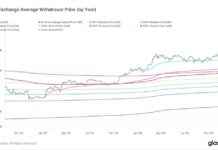If you’re part of the Web3 community, you’ve probably been traveling a lot this year, attending various crypto conferences around the world. These events have become a common occurrence, with hundreds of side-events popping up around major gatherings. While some conferences like Consensus and ETHDenver provide value, the constant travel and endless panels may not be the best approach for industry adoption.
Networking at conferences is essential in the decentralized crypto space, but collecting contacts and taking selfies may not lead to tangible results. Many conversations at these events often end up being forgotten, with little follow-through after the conference. The current conference model, based on a “pay-to-play” system, may limit the spread of innovative ideas and create an echo chamber of like-minded individuals.
Moreover, the focus on becoming the most influential crypto company or figure within the industry itself may not be the most effective strategy. With limited funding and resources, it’s crucial to evaluate the cost-benefit of attending numerous conferences. The high costs associated with tickets, travel, accommodation, and time away from core responsibilities can strain even well-funded companies.
Additionally, the proliferation of side events alongside main conferences may dilute audience engagement and lead to empty rooms. While these events may provide opportunities for networking and visibility, they can also serve as vanity exercises that inflate egos without delivering substantial value to the industry.
As the crypto industry matures, it’s essential to reevaluate the purpose and impact of the conference circuit. Instead of focusing solely on attending events, companies should consider redirecting resources towards innovative onboarding strategies and user-friendly explanations of their technology. By shifting the focus towards real-world use cases and user adoption, the industry can move beyond being perceived as a passing trend and towards mainstream acceptance.
While conferences can still play a role in industry networking and knowledge-sharing, a more strategic and targeted approach to event participation may benefit both individual companies and the industry as a whole. By prioritizing meaningful interactions, value-driven conversations, and actionable takeaways, crypto conferences can evolve into platforms that drive genuine innovation and adoption in the digital asset space.


















